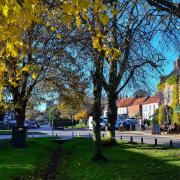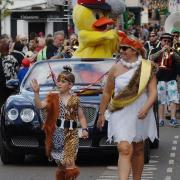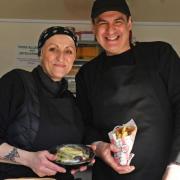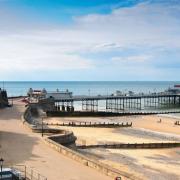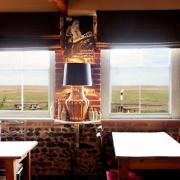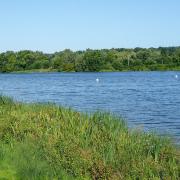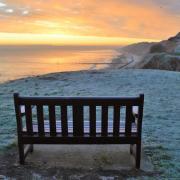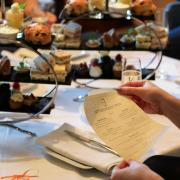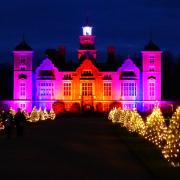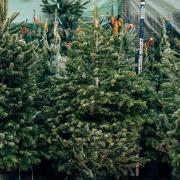As market towns go, North Walsham has been through a lot in the past 700 years - but its proud, rich history continues to shape life there today

1. Norfolk’s only canal
Opened in 1826, the North Walsham and Dilham canal was Norfolk’s only artificial locked sailing canal, running from Antingham Bone Mills to Wayford Bridge where it joined the River Ant. Almost nine miles long, it used six large locks to allow the wherries through, carrying cargo to and from mills and communities along its route.
The canal remained in operation throughout the 19th century, but as trade fell, it went into steep decline, gradually falling into disrepair. The last wherry to navigate it was the motor wherry Ella in 1934.
But in recent years the North Walsham and Dilham Canal Trust has given the canal a new lease of life, clearing and restoring the waterways, transforming it into a tranquil wildlife haven for all.
2. The Great Fire
At 6am, on June 25, 1600, a fire broke out in a house lived in by the ‘poor and lewde’ Mr Dowle. With the town built of timber, thatch and lump clay and the buildings huddled together, it quickly spread, and within just a few hours The Great Fire of North Walsham proved devastating, destroying 118 homes, 70 shops, the market cross and many market stalls. Mr Dowle was caught fleeing the fire and was sent to jail. Only the church survived, despite catching light in five places, and it provided temporary shelter to the townspeople for many months.

3. Motorbike madness
The Norfolk Motorcycle Museum, hidden away next to the town’s railway station, is a haven for all those who love old machines. Row upon row of motorbikes of all conditions and ages, some dating back to the 1900s, fill the museum, along with a display of early Dinky and other makes of die cast toys dating from the 1940s.
4. Horticultural pioneers
North Walsham is a little bit of a horticultural haven. The Norfolk Royal Apple, a sweet, old-fashioned fruit with a delicate melon flavour, was found by chance at Wright’s Nurseries in the town more than a century ago growing as a sporadic seedling. Soon a good stock of saplings were propagated and before long it become one of the nation’s favourite varieties and is still readily available today.
And it wasn’t just fruit which was making a name for itself – North Walsham was also famous for its roses. Edward LeGrice founded his business in Yarmouth Road in 1919 breeding exciting new varieties of roses. He won countless awards over the years for his unusual roses, renowned for their pioneering colours, such as lilac and brown.
5. The collapsed church tower
North Walsham’s St Nicholas Church stands proud for a reason. It should be very pleased with itself indeed. In its long and colourful history it has survived the town’s great fire, catastrophic collapses, the Black Death, a siege and battle.
It is a symbol of the prosperity of its once thriving weaving industry and in the early 18th century the church’s soaring tower and spire, standing 180ft high, was crowned the tallest building in the county, second only to Norwich Cathedral.
In 1724, the town’s annual Ascensiontide Fayre saw the heavy bells rung for many hours, causing a catastrophic vibration in the tower. The next morning, the town watched in horror as the south and west sides of the steeple collapsed.
Further collapses followed, then in 1836 heavy gales blew the north side of the steeple into the chasm below, sending an earthquake-like tremor through the town. Over the years, stabilisation and some rebuilding work has been carried out and the ruined tower still stands.
6. Revolting times
The famous Peasants’ Revolt of 1381 affected large parts of England and saw major uprisings and unrest across the land. The Battle of North Walsham was a hugely significant moment in the Peasants’ Revolt as it was the last occurrence of any major resistance, with the peasants’ leaders defeated. Thousands of rebels were forced from Norwich by Bishop Henry De Spenser’s men and they retreated to a camp at Bryant’s Heath near North Walsham. When the peasants were confronted by his forces, thousands fled to St Nicholas Church and barricaded themselves in, causing huge damage to the building. It was the scene of a massacre, with most of the peasants killed and their leader, local dyer John Litester, captured and executed.
7. Fit for a lord
Paston Sixth Form College was formerly a prestigious grammar school where Lord Nelson and his brother William were educated. It was founded 400 years ago by Sir William Paston as a grammar school for boys, most of who boarded. Among its famous alumni were Thomas Tenison, the Archbishop of Canterbury who crowned Queen Anne and George I, and in more recent years, the broadcaster, writer and actor Stephen Fry. When Sir William died in 1610, trustees were established to ensure his legacy would continue to support education in Norfolk through the generations. Today, in the Nelson Room, students can see where the seafaring hero once sat at his desk to study. Sir William’s incredibly ornate tomb can be found in the church.




